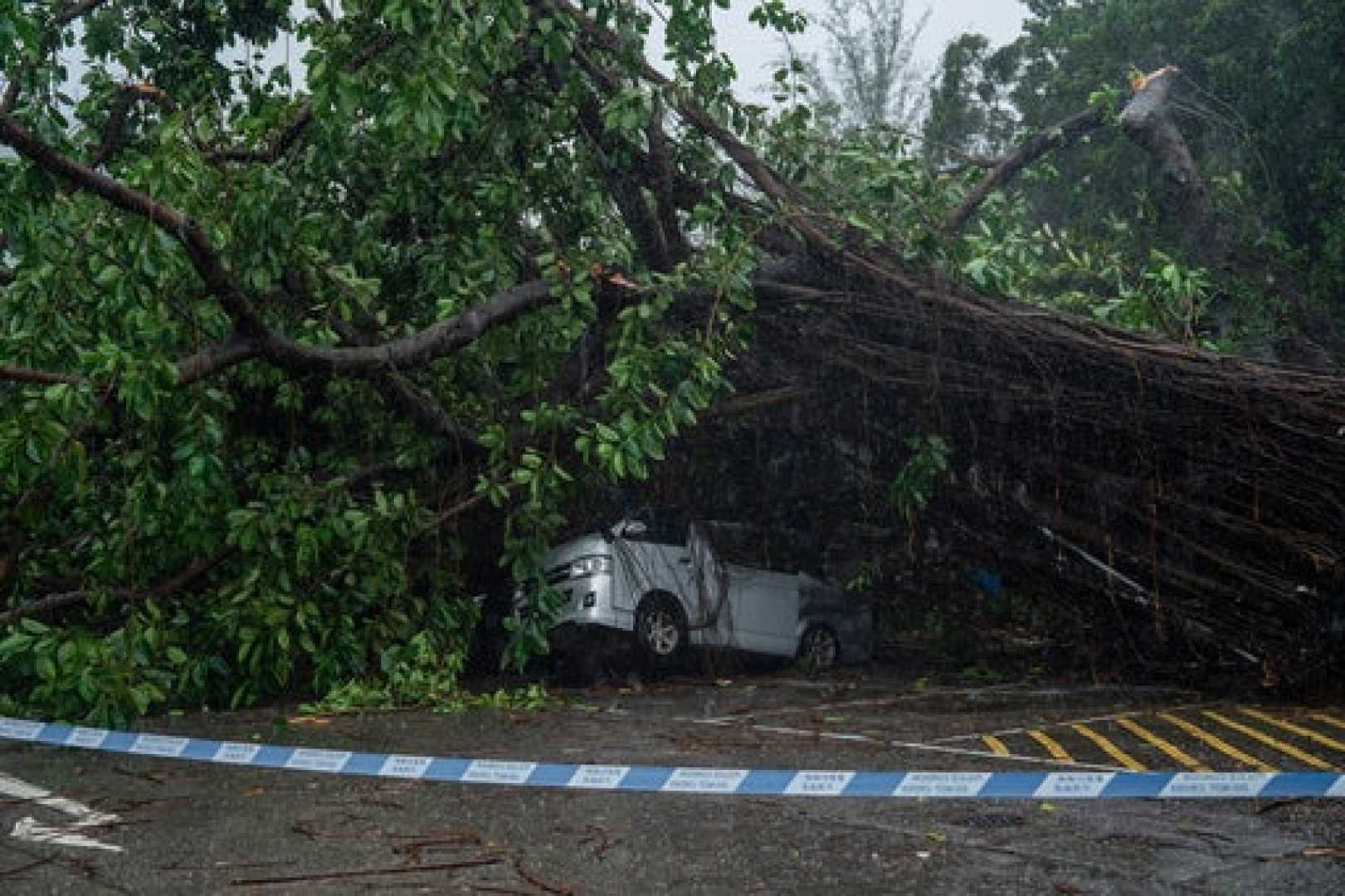News
Typhoon Wipha Hits Hong Kong, Displacing Hundreds and Downgrading Warnings

HONG KONG, July 20 (Reuters) – Typhoon Wipha unleashed heavy rains on Hong Kong on Sunday as it moved south before making landfall in Guangdong province, China. The storm caused fallen trees and scaffolding, prompting over 200 individuals to seek refuge in temporary shelters.
At 7:45 p.m., Hong Kong’s weather authorities downgraded the typhoon warning to a No. 3 strong wind signal. Earlier in the day, they reduced the signal from the maximum of 10, which had been in effect for nearly seven hours.
Eastern District councillor Kenny Yuen said, “Compared to previous typhoons like Mangkhut and Hato, which caused much more astonishing destruction, the impact this time was primarily limited to fallen trees and collapsed scaffolding.” He spoke in North Point, where bamboo scaffolding from a residential compound under renovation had fallen onto the road.
During the storm, over 110 mm (4 inches) of rain fell in just three hours, with maximum wind gusts reaching 167 kph (103 mph). The city’s observatory noted that much of the rain concentrated on the northern region near the mainland.
The government reported that 26 people sought treatment in public hospitals, while 253 went to shelters. A total of 471 fallen trees were reported.
Typhoon Wipha made landfall in Taishan city at around 5:50 p.m. and weakened to a severe tropical storm, according to China’s state-run CCTV. In Macau, which is close by, authorities also downgraded the typhoon signal to 8 and warned of flooding in the inner harbour area.
Hong Kong’s airport authority estimated that around 80,000 travellers were affected by the rescheduling of 400 flights due to the typhoon. Cathay Pacific Airways canceled all flights at Hong Kong airport between 5 a.m. and 6 p.m. on Sunday, waiving ticket-change fees for rebooking.
Most public transport in Hong Kong was halted, including ferries, due to high sea swells.












